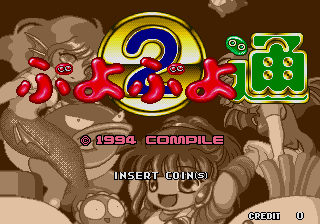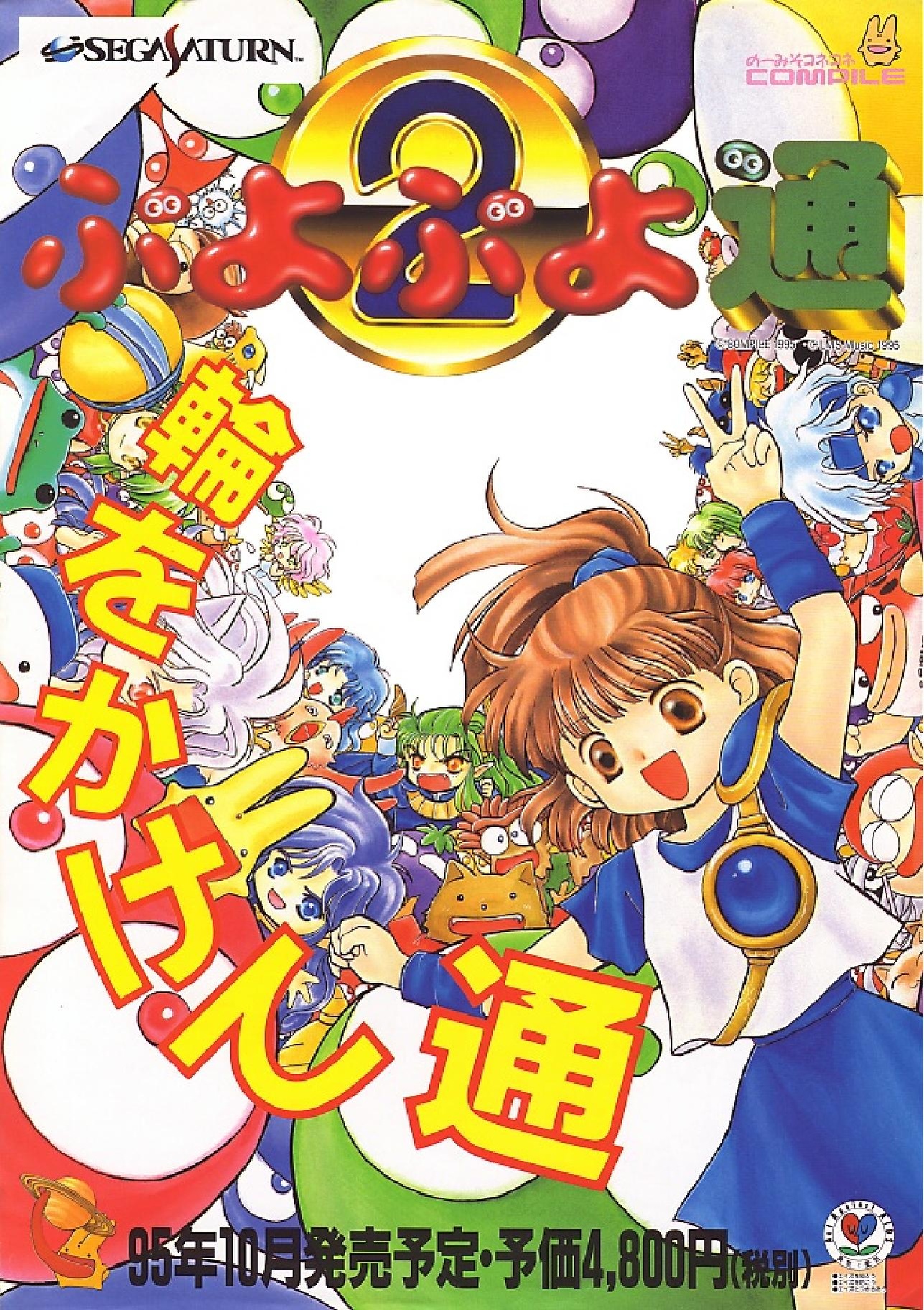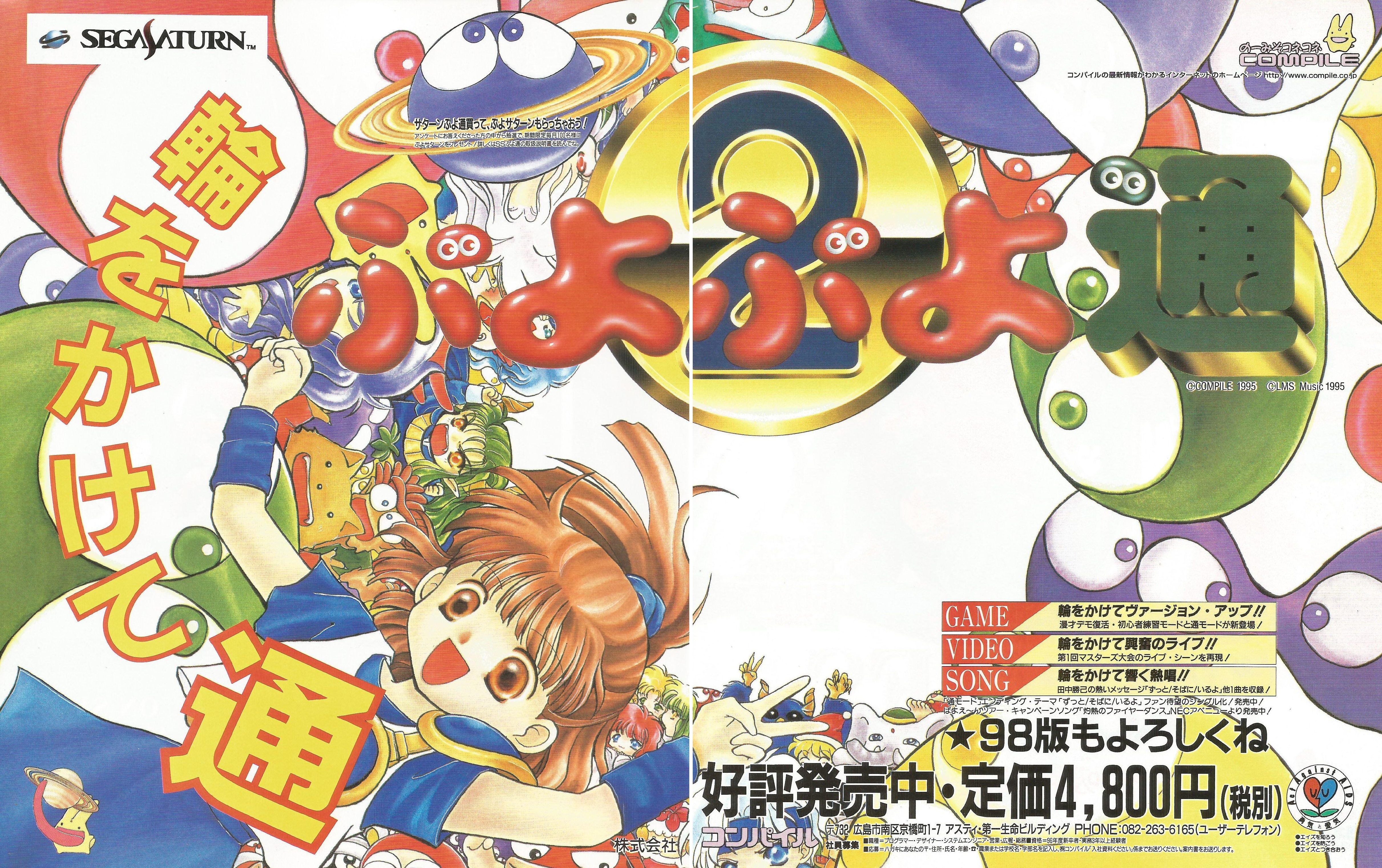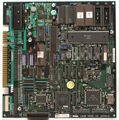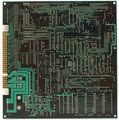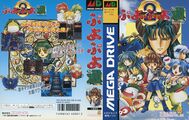Puyo Puyo Tsuu
From Sega Retro
| Puyo Puyo Tsuu | ||||||||||||||||||||||||||||||||||||||||||||||||||||||||||||||||||||
|---|---|---|---|---|---|---|---|---|---|---|---|---|---|---|---|---|---|---|---|---|---|---|---|---|---|---|---|---|---|---|---|---|---|---|---|---|---|---|---|---|---|---|---|---|---|---|---|---|---|---|---|---|---|---|---|---|---|---|---|---|---|---|---|---|---|---|---|---|
| System(s): Sega System C-2, Sega Mega Drive, Sega Game Gear, Sega Saturn, Neo Geo Pocket Color, WonderSwan, Virtual Console, Android | ||||||||||||||||||||||||||||||||||||||||||||||||||||||||||||||||||||
| Publisher: Compile, SNK, Bandai | ||||||||||||||||||||||||||||||||||||||||||||||||||||||||||||||||||||
| Developer: Compile, Sega | ||||||||||||||||||||||||||||||||||||||||||||||||||||||||||||||||||||
| Sound driver: SCSP (1 track) | ||||||||||||||||||||||||||||||||||||||||||||||||||||||||||||||||||||
| Genre: Puzzle, Action (JP box says both; Sega of Japan archive says just Puzzle)) | ||||||||||||||||||||||||||||||||||||||||||||||||||||||||||||||||||||
| Number of players: 1-2 | ||||||||||||||||||||||||||||||||||||||||||||||||||||||||||||||||||||
| ||||||||||||||||||||||||||||||||||||||||||||||||||||||||||||||||||||
|
CERO
Missing Parameter! |
Puyo Puyo Tsuu (ぷよぷよ通) or Puyo Puyo 2 is a puzzle game developed by Compile in 1994, initially released for Sega's System C-2 arcade board before being ported to other consoles (such as the Sega Mega Drive, Sega Game Gear, and Sega Saturn). It is the sequel to the Sega/Compile version of Puyo Puyo, whose path the entire series has followed to date.
The standalone game was exclusively released in Japan until 2000, when Sega ported it to the Neo Geo Pocket Color under the name Puyo Pop in the US/Europe (unrelated to the GBA Puyo Pop Minna de Puyo Puyo) — making it the first Puyo Puyo game to be released outside Japan unaltered (and establishing the Puyo Puyo/Puyo Pop naming discretion still used today). It was also included as the Classic mode of Puyo Pop Fever and later rereleased on the Virtual Console's Import section (albeit untranslated).
Sega also produced a port to Bandai's WonderSwan handheld.
The Mega Drive version was the first MD game to use the new Saturn-style box layout in the JP region.
Contents
Gameplay
While the 1992 release of Puyo Puyo is credited for introducing competitive play, the improvements made in Puyo Puyo Tsuu made it a gold standard for tournaments, and the basis for all Puyo Puyo releases going forward. Unlike its predecessors, no non-competitive single player modes exist in Tsuu (i.e. "practice" or "endless") - the player is always pitted against a human or AI opponent (an exception being the later Sega Saturn version, which brings these modes back).
Puyo Puyo Tsuu introduces a concept known as "sousai" (相殺), commonly translated as "offsetting" or "countering" as a form of defense against incoming ojama puyo. If, while ojama puyo are queued to land in your play area, you are able to pop puyo, the resulting ojama created in your turn will cancel out the ojama your queue. For example, if five ojama are queued and your pop creates four, you will only receive one ojama puyo. Furthermore, if in this situation you create six ojama puyo, your opponent will receive one instead.
While the sousai rule can be disabled, it typically leads to shorter games, as skilled players can both send ojama puyo to their opponent, and avoid receiving any ojama puyo themselves. Subsequently, this style of gameplay leans towards a need for large chains obtained within the shortest possible time. The scoring has also been revised so that the big points are only available to those who can create these large chains.
As with all Puyo Puyo titles, five different colours of puyo exist, however unlike its predecessors, Puyo Puyo Tsuu rarely uses all five colours at once. Instead it is more common for four colours to be used, which in turn leads to a greater chance of producing chains (Puyo Puyo Sun would later reduce this to three colours for earlier stages). As fewer colours in play usually leads to more popping, players are less likely to lose based on puyo placements alone.
With "Rule Henka" enabled, two new types of ojama puyo come into play. "Kata puyo" (固ぷよ), resembling ice blocks, are twice as strong as ojama (but are popped in the same way) and "tokuten puyo" (得点ぷよ) increase the player's score if popped. The "Rensa Shibari" option also allows players to dictate how many chains are needed to generate ojama puyo.
Also new to Tsuu is the "quick turn" (クイックターン) feature. If a falling pair of puyo is obstructed on both sides, rotating will cause the pair to flip, with the top puyo becoming the bottom and vice versa. Also, while previous Puyo Puyo ganes only show a preview of the next piece, Tsuu shows two upcoming pieces, theoretically allowing the player to plan further ahead.
Finally "zen keshi" (全消し) or "full erase" bonuses are awarded if the player manages to pop all the puyo in their play area. This in turn causes a significant amount of ojama (or tokuten) puyo to be sent to the opposing player after the next pop.
While the single player campaign is similar to 1992's Puyo Puyo, it is now less linear, with multiple stages of progession accessed only when the player has achived enough "rest points". Opponents are to some degree randomised, and given that each opponent uses different tactics, this means it is less likely two playthroughs will be the same. Furthermore some opponents only appear if the player deliberately scores too few rest points, or manages to level up without using any continues.
A unique technical feature to the Mega Drive version is a "voice" option. While sampled speech cannot be turned off during normal play, the player can opt for lower quality samples that do not interrupt the music.
Production credits
Mega Drive version
- Produce: Moo Niitani
- Program: Jemini Hirono, Yasutoshi Akiyama S
- Design: Riu.S.Aya
- Sound & Voice: Tsuyoshi Matsushima (LMS Music), BA.M (LMS Music)
- Manual & Package: Fukusaburo Kido, Sonchoh Sawa
- Special Thanks: Kazuhiko Kitade, Kengo Morita (24)
© Compile 1994
WonderSwan version
- TODO confirm against ending (this is ripped from ROM)
- Planner: Masato Simamura, Kaoru Fujiwara
- Programmer: Osamu Kodera
- Special Programmer: Tadashi Eda
- Graphic: Akiko Saito
- Sound: Hideki Ave (Hideki Abe?)
- Special Thanks: Go Tsuzuki
Magazine articles
- Main article: Puyo Puyo Tsuu/Magazine articles.
Promotional material
Saturn version
also published in:
- Sega Saturn Magazine (JP) #1995-10: "October 1995" (1995-09-08)[10]
- Sega Saturn Magazine (JP) #1995-11: "November 1995" (1995-10-07)[11]
Photo gallery
Physical scans
Mega Drive version
Game Gear version
Saturn version
| Sega Retro Average | ||||||||||||||||||||||||||||||||||
|---|---|---|---|---|---|---|---|---|---|---|---|---|---|---|---|---|---|---|---|---|---|---|---|---|---|---|---|---|---|---|---|---|---|---|
|
| 78 | |
|---|---|
| Based on 6 reviews | |
| Saturn, JP (Satakore) |
|---|
Neo Geo Pocket Color version
| Sega Retro Average | ||||||||||||||||||||||||||||||||||
|---|---|---|---|---|---|---|---|---|---|---|---|---|---|---|---|---|---|---|---|---|---|---|---|---|---|---|---|---|---|---|---|---|---|---|
|
| 67 | |
|---|---|
| Based on 6 reviews | |
WonderSwan version
Technical information
ROM dump status
| System | Hash | Size | Build Date | Source | Comments | |||||||||
|---|---|---|---|---|---|---|---|---|---|---|---|---|---|---|
| ✔ |
|
608,262,480 | 1995-09-30 | CD-ROM (JP) | T-6601G, T-6604G V1.200 |
External links
- Sega of Japan Virtual Console page (Japanese)
- Puyo Puyo Tsuu (Nintendo 3DS version) on Nintendo.co.jp
- Bandai's page for the WonderSwan version (Japanese)
- Puyo Puyo Tsuu on Google Play (offline)
- Puyo Puyo Tsuu PuyoSega version on Google Play (offline)
References
- ↑ http://www.swan.channel.or.jp/swan/software/line_up/puyo/index.html (Wayback Machine: 2003-08-05 02:44)
- ↑ 2.0 2.1 http://vc.sega.jp:80/vca_puyo2/ (Wayback Machine: 2011-06-10 00:10)
- ↑ https://www.nintendo.co.jp/wii/vc/software/03.html (Wayback Machine: 2018-03-06 00:26)
- ↑ http://vc.sega.jp:80/vc_puyo2/ (Wayback Machine: 2007-04-23 06:59)
- ↑ 5.0 5.1 http://www.nintendo.com/games/detail/veYJinSM9ynV1TYmbC3HDWzWimGIg5lU (Wayback Machine: 2010-11-22 22:45)
- ↑ 6.0 6.1 http://www.nintendolife.com/games/megadrive/puyo_puyo_2_tsuu (Wayback Machine: 2017-10-18 05:25)
- ↑ https://www.nintendo.co.jp/wii/vc/software/13.html (Wayback Machine: 2018-03-10 23:36)
- ↑ 8.0 8.1 http://vc.sega.jp:80/3ds/puyo2/ (Wayback Machine: 2013-12-22 23:06)
- ↑ http://www.4gamer.net/games/123/G012307/20110826014/
- ↑ Sega Saturn Magazine, "October 1995" (JP; 1995-09-08), page 14
- ↑ Sega Saturn Magazine, "November 1995" (JP; 1995-10-07), page 14
- ↑ 12.0 12.1 File:CVG UK 170.pdf, page 44 Cite error: Invalid
<ref>tag; name ":File:CVG UK 170.pdf_p44" defined multiple times with different content - ↑ File:SSM_JP_19951101_1995-11.pdf, page 195
- ↑ 14.0 14.1 Saturn no Game wa Sekai Ichi~i~i~i!: Satamaga Dokusha Race Zen Kiroku, SoftBank Publishing, page 14 Cite error: Invalid
<ref>tag; name ":File:SnGwSISDRZK Book JP.pdf_p14" defined multiple times with different content - ↑ Consoles +, "Janvier 1996" (FR; 199x-xx-xx), page 114
- ↑ Famitsu, "1995-11-03" (JP; 1995-10-20), page 1
- ↑ Saturn Fan, "1995 12-22" (JP; 1995-12-08), page 78
- ↑ Sega Saturn Magazine, "November 1995" (JP; 1995-10-07), page 195
- ↑ 19.0 19.1 File:Arcade UK 18.pdf, page 100 Cite error: Invalid
<ref>tag; name ":File:Arcade UK 18.pdf_p100" defined multiple times with different content - ↑ 20.0 20.1 File:ConsolesPlus FR 098.pdf, page 134 Cite error: Invalid
<ref>tag; name ":File:ConsolesPlus FR 098.pdf_p134" defined multiple times with different content - ↑ 21.0 21.1 File:CVG UK 220.pdf, page 99 Cite error: Invalid
<ref>tag; name ":File:CVG UK 220.pdf_p99" defined multiple times with different content - ↑ Game Informer, "October 1999" (US; 1999-xx-xx), page 92
- ↑ Pocket Games, "Spring 2000" (US; 2000-xx-xx), page 43
- ↑ Techno (UK) (+0:00)
NEC Retro has more information related to Puyo Puyo Tsuu
|
- Pages with reference errors
- 1-2 player games
- WonderSwan games
- All arcade games
- System C games
- 1994 System C games
- All 1994 games
- JP Mega Drive games
- All JP games
- Mega Drive games
- 1994 Mega Drive games
- Mega Drive puzzle games
- All puzzle games
- JP Game Gear games
- Game Gear games
- 1994 Game Gear games
- Game Gear puzzle games
- JP Saturn games
- Saturn games
- 1995 Saturn games
- All 1995 games
- Saturn puzzle games
- JP Wii Virtual Console games
- US Wii Virtual Console games
- All US games
- EU Wii Virtual Console games
- All EU games
- Wii games
- 2007 Wii games
- All 2007 games
- Wii Virtual Console games
- JP Nintendo 3DS Virtual Console games
- Nintendo 3DS games
- All 2013 games
- 2013 Nintendo 3DS games
- Nintendo 3DS Virtual Console games
- JP Android games
- PuyoSega games
- Android games
- Old content rating field
- Use romtable template
- All games
- Credits without source
- Credits without reference
- GalleryPrintAd file defined
- Old-style rating (consolesplus)
- Rating without PDF source
- Old-style rating (cvg)
- Use magref
- Old-style rating (famitsu)
- Old-style rating (ssmjp)
- Old-style rating (ssmjp r)
- Update ratings template
- 5 old ratings
- Old-style rating (arcade)
- 3 old ratings
- Missing ROM hashes
- Old technical information
- Puyo Puyo (franchise)
